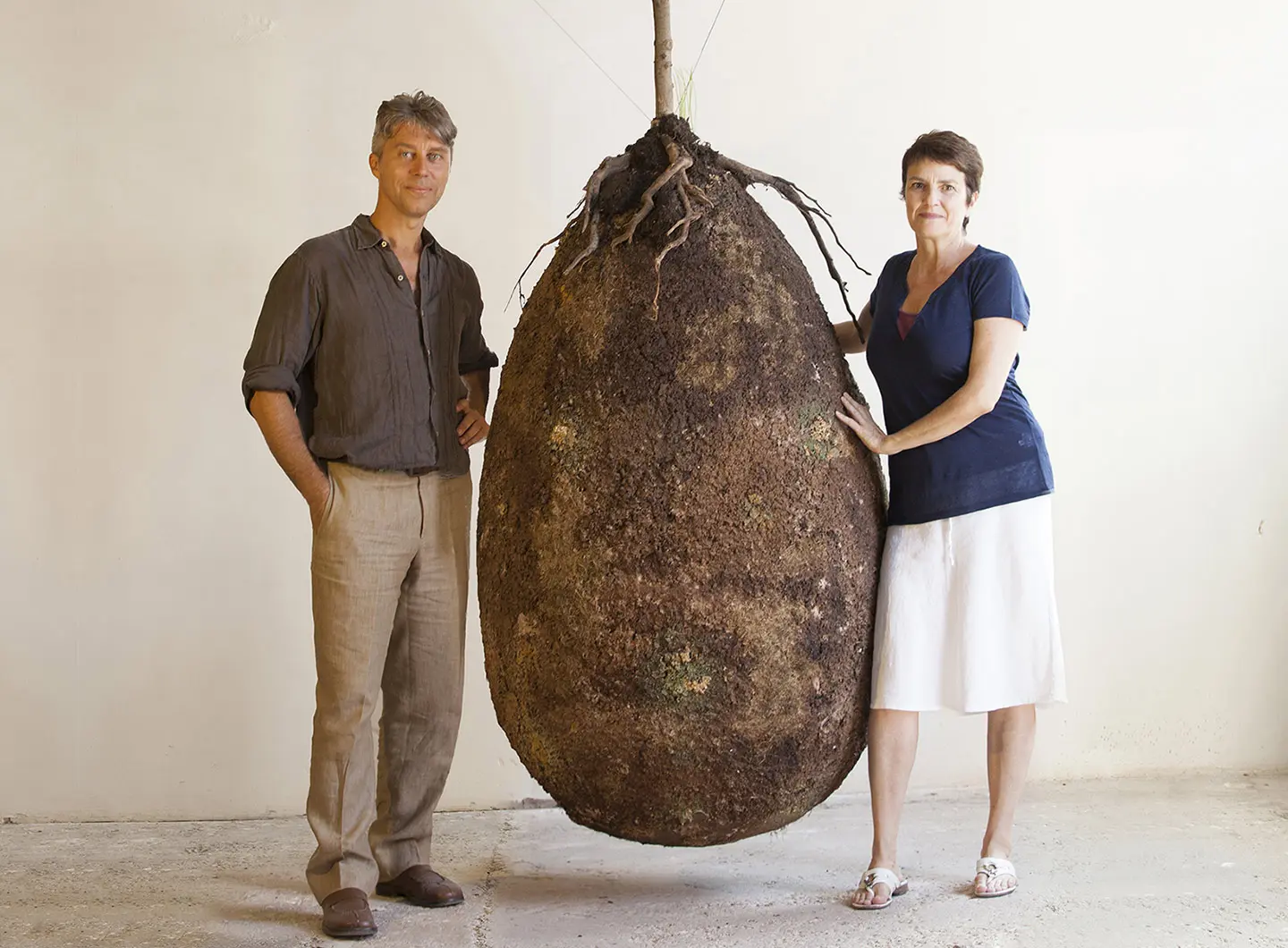From the Tokyo Design Awards, to the NY Product Design Awards & Architectural Design Awards, Best in Design, the NEB Trophy Design Competition, the Good Design Awards® and the Africa International Design Awards (AIDA), all the international news not to be missed in 2026

Photo by Paolo Barbieri
Made famous in 2003 by an avantgarde project, "a strange brown egg," they continue to tackle taboo issues and attempting to stamp out behaviours rooted in the social environment.
In 2003, Anna Citelli and Raoul Bretzel shocked both the SaloneSatellite and the wider Salone del Mobile public with an innovative project for a coffin. Since then, the prototype has never stopped being showcased and has also undergone some development. Given its sustainability and symbolic impact – the egg-shaped coffin or urn biodegrades into the ground above which a tree is planted, symbolising the deceased – it was included by Paola Antonelli and her team in Broken Nature, the exhibition organised in Milan for XXII Triennale.
Death is a matter that concerns all human beings and has powerful implications, both cultural and emotional, yet it is a subject that our culture, or rather Western culture in general, finds uncomfortable. This is why it has been totally excluded from the realm of design for decades. Thinking around redesigning an object – a coffin – we started wondering how we could soften this taboo by building greater awareness, taking a critical look at some aspects of our society. For us it was, and is, important to communicate the fact that man is part of nature, because we believe that thinking ourselves superior to it, forgetting our own origin, is one of the reasons for the harm we are doing to our planet.
If we strip death of its cultural overtones, it is actually an event common to every living thing, it is natural and is part of life in its widest sense: plants, animals, microorganisms – all have their own lifecycle. Human beings differ from other life forms because they can witness the whole of this cycle and as they have evolved, other cultures closer to nature have ritualised this moment, making it an inevitable part of a wider lifecycle. In order to preserve this ancestral image and tie it in with modern demands, we worked through symbolic images (the egg, the foetal position and the tree, symbols of rebirth and of the union between sky and earth) and biodegradable materials, and came up with the bioplastic egg, the foetal position and the tree.
We were worried about public reaction when we first took Capsula Mundi to SaloneSatellite, because we were presenting an uncomfortably themed project at an event largely geared to furnishing. A lot of people came up to our stand, intrigued by this strange brown egg hanging with a green tree above it in a completely white room, and smilingly asked us what it was. We told them it was “a coffin.” Needless to say, their expressions changed immediately! But after we’d explained the overall project, they started beaming again.
During subsequent events, we realised that the taboo around death is a huge weight on people’s shoulders. Once you come up with a way of putting a positive spin on it, the weight suddenly drops, leaving an amazing feeling of liberation. Capsula Mundi takes the symbology of rebirth and ends with the tree, an object that is certainly less durable than a marble tombstone, but which is immediately seen as ‘friendly’ because it brings together the idea of a fixed place (the tree cannot be moved) and our memorial needs and also, as a living thing, it is a comforting buffer for our innermost feelings.
We took the first steps towards making the project concrete a few years ago, with the backing of our supporters, when we started producing and marketing the biodegradable Capsula Mundi urn, above which a tree is planted. We are continuing to work on developing the version for the body. We hope the visibility the Triennale has given us will help to speed up our progress, which also depends on the cultural openness that exhibitions such as Broken Nature can help spread and accelerate.
We’ve got a lot of projects in the pipeline, which we’d rather talk about once they’ve come to fruition, but what we can say is that they also touch on our taboos and the question of how to break down preconceptions about the social environment around us. But Capsula Mundi takes up a lot of time and effort, and we always handle it ourselves, with an almost ‘maniacal’ devotion to promoting it, which means that we travel and come up against extremely urgent contemporary issues. The design and planning world has to take into account issues around global industrial production, which imply significant changes: environmental impact, the distribution of work and fair compensation, research into eco-compatible materials and the management of waste materials are just some of the issues that will need to be tackled in the future.

10 design exhibitions to see before the year’s end
They are all Italian and all in some way draw on the theme of memory. This is true even when they deal with current sporting events associated with the imminent inauguration of the Winter Olympics. There are ten of them and for the most part they are held in the most reserved cultural circuits, outside the mainstream. It’s even better when they’re out of town, bringing historic residences to life with gleams and flashes of good design



 Stories
Stories











